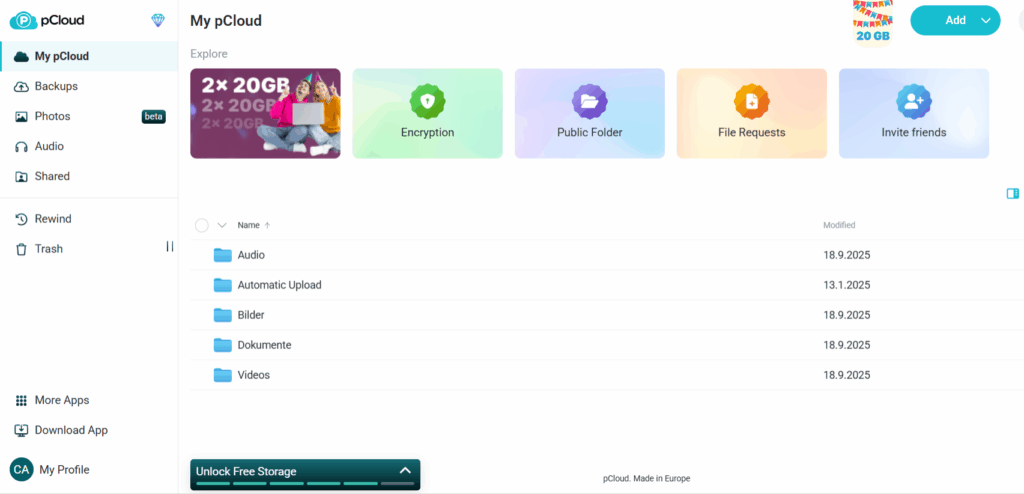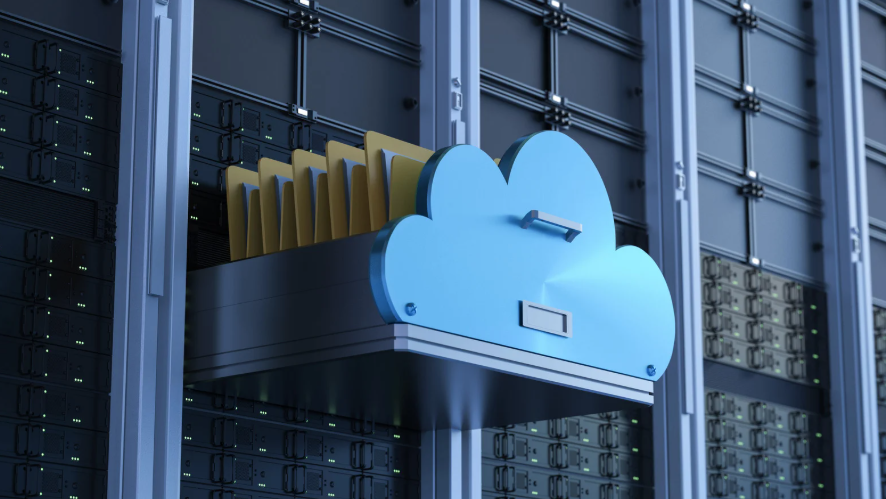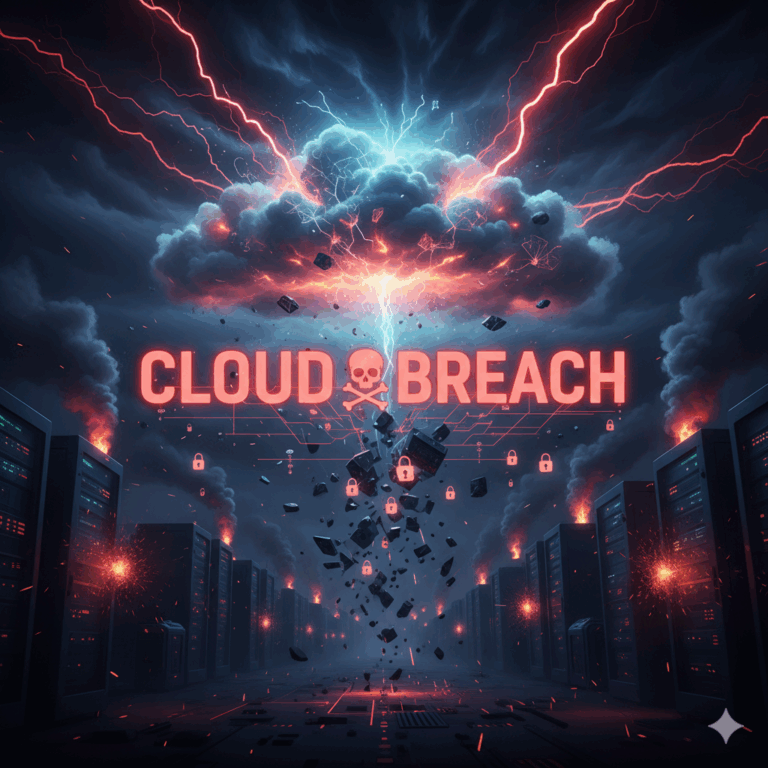Why hybrid cloud is the best solution for modern businesses, let it find out in this articel. Today technology is no longer just a support function—it’s the backbone of nearly every operation. From storing sensitive customer data to running mission-critical applications, the decision of where and how to host IT infrastructure has become a strategic priority. Organizations are increasingly faced with two main options: moving fully to the cloud or maintaining traditional on-premises systems.
The cloud has gained massive popularity thanks to its scalability, flexibility, and cost-effectiveness. It allows businesses to innovate quickly, respond to market changes, and access advanced tools without heavy upfront investments. Yet, relying entirely on the cloud isn’t without drawbacks—issues like compliance requirements, rising costs at scale, and dependency on third-party providers can make businesses hesitant.
On the other side, on-premises infrastructure offers control, security, and predictability. Sensitive data stays within company walls, performance is highly reliable, and compliance with strict industry regulations is easier to enforce. However, building and maintaining these systems requires significant resources and can limit the ability to scale quickly.
This brings us to a crucial realization: neither the cloud nor on-premises is a perfect, one-size-fits-all solution. Instead, businesses are increasingly embracing a hybrid approach—a blend of both models. Hybrid IT strategies enable organizations to optimize costs, enhance resilience, and balance innovation with security. In this article, we’ll explore why hybrid is emerging as the best long-term solution for modern businesses.
The Case for On-Premises: Control and Security
For decades, on-premises infrastructure was the standard. In this model, a business owns and maintains all of its hardware and software within its own data center. The primary advantage of an on-premises solution is complete control. Companies have full autonomy over their data, security, and hardware configurations. This can be particularly important for industries with strict regulatory requirements, like finance or healthcare.
Another key benefit is data security. Since data never leaves the company’s physical control, it can be easier to manage and protect against external threats. Additionally, an on-premises setup doesn’t rely on an internet connection for access, which can be crucial for mission-critical applications where even a few minutes of downtime can be costly.
However, the on-premises model has significant downsides. It requires a substantial upfront investment in hardware and software, as well as ongoing costs for maintenance, power, and cooling. Scaling up can be slow and expensive, and the burden of managing and updating the infrastructure falls entirely on the in-house IT team.
Cloud vs. On-Premises: The Core Differences
When it comes to IT infrastructure, businesses usually weigh two traditional models: cloud computing and on-premises systems. Both have unique characteristics that can influence costs, security, performance, and long-term scalability.
Cloud Computing
-
Scalability and Flexibility
Cloud services are designed for rapid expansion. If your business experiences a sudden spike in traffic—say during a product launch or seasonal campaign—you can scale resources almost instantly. Likewise, when demand drops, you can scale back just as easily, paying only for what you use. This flexibility is a game-changer for organizations that experience fluctuating workloads. -
Cost Model
Unlike on-premises infrastructure that demands heavy upfront investment in servers, data centers, and maintenance, cloud computing typically follows a pay-as-you-go model. Businesses avoid large capital expenditures and instead treat IT as an operating expense. However, costs can become unpredictable over time if usage isn’t carefully monitored, especially when adding premium services or large-scale storage. -
Accessibility and Collaboration
One of the cloud’s strongest advantages is accessibility. Employees can access applications and data from virtually anywhere with an internet connection, making remote and hybrid work models much easier to support. Collaboration tools hosted in the cloud—like Microsoft 365 or Google Workspace—allow teams across different geographies to work in real time. -
Innovation and Continuous Upgrades
Cloud providers regularly roll out new features, from AI-powered analytics to advanced security tools. This allows businesses to leverage cutting-edge technology without investing in costly upgrades or waiting for internal teams to deploy solutions. Essentially, the cloud keeps organizations at the forefront of digital transformation.
On-Premises Infrastructure
-
Control and Customization
With on-premises infrastructure, businesses maintain full ownership of their hardware, software, and network configurations. This control enables organizations to tailor systems to their unique operational needs and avoid limitations imposed by third-party providers. -
Security and Data Sovereignty
For many industries, especially those handling highly sensitive information, the ability to keep data within company-controlled servers is invaluable. On-premises systems reduce exposure to third-party vulnerabilities and ensure that data sovereignty requirements are met. This is often a deciding factor for government agencies, law firms, and defense contractors. -
Compliance and Regulatory Requirements
Certain industries, such as finance and healthcare, are bound by strict compliance rules (like GDPR, HIPAA, or PCI DSS). Maintaining data on-premises can make regulatory audits and reporting more straightforward, since companies have direct oversight of their data handling processes. -
Performance and Reliability
Local infrastructure can provide lower latency and higher performance for mission-critical applications that require speed and reliability. For example, manufacturing plants or financial trading systems often rely on on-premises infrastructure to avoid potential slowdowns caused by internet connectivity issues.
Balancing the Trade-Offs
Each model has undeniable strengths—but also limitations. Cloud environments can raise concerns about data privacy, compliance, and long-term costs that may spiral as businesses scale. There is also the risk of vendor lock-in, where switching providers becomes complex and costly. On-premises infrastructure, meanwhile, demands significant upfront investments, ongoing maintenance, and skilled IT staff. Scaling capacity requires new hardware purchases, which slows down innovation and increases costs.
This is why many organizations are recognizing that the real answer doesn’t lie in choosing one or the other—but in finding the right balance between both.
The Rise of the Cloud: Flexibility and Scalability
The cloud, a term for using a third-party’s data centers and services over the internet, has revolutionized IT. Providers like Amazon Web Services (AWS), Microsoft Azure, and Google Cloud offer a vast array of services, from simple storage to complex machine learning platforms.
The main draw of the cloud is its unmatched scalability and flexibility. Businesses can rapidly scale their resources up or down to meet demand without purchasing new hardware. This pay-as-you-go model transforms a large capital expenditure (CapEx) into a more manageable operational expenditure (OpEx). Cloud solutions also offer enhanced accessibility, allowing employees to work from anywhere with an internet connection. Furthermore, cloud providers handle maintenance, security updates, and infrastructure management, freeing up internal IT teams to focus on more strategic projects.
Despite these benefits, the cloud isn’t without its challenges. Concerns about data security and privacy remain, as data is no longer under a company’s direct physical control. While providers have robust security measures, some organizations are wary of housing sensitive data off-site. The reliance on an internet connection also means that a service outage could disrupt business operations. Additionally, while the pay-as-you-go model can be cost-effective, costs can spiral out of control if not carefully managed.
The Hybrid Approach: The Best of Both Worlds
A hybrid cloud approach strategically combines on-premises infrastructure with public or private cloud services. It’s a pragmatic solution that allows businesses to leverage the strengths of both models while mitigating their weaknesses.
The core principle of a hybrid cloud is to place workloads where they make the most sense. For example, a company might use its on-premises data center to store sensitive or regulated data and run mission-critical applications that require low latency. At the same time, it can use the public cloud for applications with variable workloads, such as an e-commerce website during a major sales event. This allows the business to rapidly scale without a massive upfront investment in hardware.
Key Benefits of a Hybrid Cloud:
- Optimized Costs: A hybrid approach helps manage costs by using the public cloud for scalable, non-critical tasks while keeping stable, predictable workloads on-premises. This avoids the high costs of over-provisioning an on-premises data center and the potential for a runaway cloud bill.
- Enhanced Security and Compliance: By keeping sensitive data on-premises, a business can meet stringent regulatory requirements and maintain full control over its most valuable assets.
- Increased Flexibility: The ability to seamlessly move workloads between environments provides unparalleled agility. This is perfect for scenarios like “cloud bursting,” where an application’s workload spikes beyond the capacity of the on-premises infrastructure and is temporarily offloaded to the public cloud.
- Improved Disaster Recovery: A hybrid model can serve as a robust disaster recovery solution. Companies can replicate their on-premises data to the cloud, ensuring business continuity in case of an on-premises outage.
The choice between cloud and on-premises is no longer an all-or-nothing decision. For many businesses, a hybrid cloud strategy offers a nuanced and powerful way to navigate the complexities of modern IT. It allows organizations to maintain control over their most critical data and applications while gaining the flexibility, scalability, and cost efficiency of the cloud. By embracing a hybrid approach, businesses can build a resilient, adaptable, and forward-looking IT infrastructure that is perfectly tailored to their unique needs and challenges.

How Secure Is the Cloud Really? Why I Recommend Microsoft OneDrive and pCloud
When it comes to digital storage, one of the first questions businesses and individuals ask is: “But is the cloud really secure?” It’s a fair concern. After all, we’re entrusting sensitive files, customer data, and sometimes even intellectual property to servers we don’t physically own. Cyberattacks, data breaches, and compliance requirements only make this decision more critical.
The truth is, cloud security isn’t a simple yes or no. It depends on how the provider manages security and how you as a user implement best practices. The good news: when done right, cloud storage can often be more secure than traditional on-premises solutions.
Understanding Cloud Security
Cloud providers invest billions in security infrastructure—far more than most companies could ever afford on their own. This includes:
-
Advanced Encryption: Data is typically encrypted both in transit (when moving to and from servers) and at rest (while stored).
-
Redundancy and Backups: Multiple data centers ensure that even if one server fails, your files remain accessible.
-
Continuous Monitoring: Cloud environments are monitored 24/7 to detect unusual activity and prevent breaches.
-
Compliance Standards: Many providers adhere to strict certifications such as ISO 27001, GDPR, or HIPAA.
However, cloud security is also a shared responsibility. Providers protect the infrastructure, but users must ensure strong passwords, enable multi-factor authentication, and manage access rights carefully.
Why Microsoft OneDrive Is a Secure Choice
Microsoft has become one of the leaders in cloud security. With OneDrive, users benefit from:
-
Integration with Microsoft 365 Security: Enterprise-grade protection including identity management and conditional access policies.
-
Personal Vault: A special folder secured with multi-factor authentication for sensitive files.
-
Ransomware Detection: OneDrive can detect unusual file activity, alert the user, and even help restore files to a safe version.
-
Global Compliance: Microsoft data centers meet international standards, making OneDrive suitable for businesses across multiple industries.
For companies already using Microsoft 365, OneDrive offers seamless integration—security without sacrificing usability.
Why pCloud Is a Strong Alternative
pCloud, a Switzerland-based provider, has built a reputation for combining ease of use with strong privacy standards:
-
Client-Side Encryption (pCloud Crypto): With the optional add-on, files are encrypted on your device before being uploaded. Even pCloud employees cannot access them.
-
Lifetime Storage Option: Unlike subscription-only models, pCloud offers a one-time payment for lifetime access, which appeals to both individuals and small businesses.
-
Data Residency Choices: Users can select whether their files are stored in data centers in the European Union or the United States, adding flexibility for compliance.
-
GDPR Compliance: Operating under Swiss and EU privacy laws gives pCloud an edge when it comes to strong legal protection for your data.
This makes pCloud especially interesting for individuals and small-to-medium businesses that value privacy, cost transparency, and control over where their data is stored.
Security Is About Trust + Practice
So, how secure is the cloud really? In many cases, more secure than local storage—provided you choose the right provider and follow best practices. Microsoft OneDrive and pCloud both offer top-level protection, but they serve slightly different needs:
-
OneDrive is perfect for businesses and individuals seeking enterprise-grade security, tight integration with Microsoft 365, and advanced collaboration features.
-
pCloud is ideal for those who prioritize privacy, flexible storage options, and strong compliance with Swiss/EU data protection standards.
In the end, the most secure system is the one that combines a trusted provider with responsible user behavior. With either OneDrive or pCloud, you’ll be placing your data in some of the safest hands available in today’s digital world.
Why Hybrid Is the Future
The hybrid approach is no longer just a transitional phase between legacy systems and full cloud adoption—it’s quickly becoming the long-term strategy for businesses of all sizes. It offers a pragmatic balance between innovation and responsibility, recognizing that modern organizations operate in complex environments where one-size-fits-all solutions simply don’t work.
By merging the scalability of the cloud with the control of on-premises infrastructure, companies unlock a powerful blend of benefits:
-
Agility to Adapt to Market Changes
Business environments evolve rapidly, whether due to technological innovation, shifting customer demands, or unexpected disruptions like supply chain issues. A hybrid model enables organizations to respond quickly—scaling cloud resources when demand spikes, while maintaining core operations on-premises for stability. This agility allows companies to stay competitive without compromising reliability. -
Compliance with Evolving Regulations
Regulatory landscapes are becoming more complex, with rules on data privacy and sovereignty tightening worldwide. A hybrid setup allows sensitive information to remain in secure, company-controlled data centers, while less sensitive workloads leverage the scalability of the cloud. This dual approach helps organizations strike the right balance between meeting legal obligations and embracing digital innovation. -
Optimized IT Spending
IT budgets are under constant pressure. On-premises infrastructure can lock businesses into large, upfront capital expenses, while cloud costs can grow quickly if left unchecked. Hybrid strategies give organizations the best of both models—using cost-efficient cloud services for short-term or unpredictable workloads, while reserving steady, long-term processes for existing infrastructure. This approach makes spending more predictable and reduces waste. -
Resilience Against Cyberthreats and Downtime
In an era of rising cyberattacks and operational risks, resilience is key. Hybrid systems distribute workloads across environments, minimizing the impact of outages or breaches. If a cyber incident affects one platform, critical operations can continue on the other. This layered security and redundancy ensures stronger protection against both technical failures and malicious threats.
The Strategic Advantage
Ultimately, hybrid isn’t just about technology—it’s about aligning IT infrastructure with business strategy. It enables organizations to innovate boldly, meet compliance requirements, and optimize resources, all while building resilience for the future. For companies navigating the uncertainty of the digital age, the hybrid approach is more than an option—it’s the blueprint for sustainable growth.
Conclusion – why hybrid cloud is the best solution for modern businesses
The debate between cloud and on-premises infrastructure has evolved. Today, the question isn’t about choosing one over the other—it’s about leveraging both in a way that maximizes value. That’s where the hybrid cloud shines.
By combining the scalability and innovation of the cloud with the control and security of on-premises systems, hybrid cloud offers the best of both worlds. It empowers businesses to adapt quickly to market changes, stay compliant with complex regulations, optimize IT spending, and build resilience against downtime or cyberthreats.
In short, hybrid cloud is the best solution for modern businesses because it reflects the realities of today’s digital landscape: complex, fast-changing, and highly competitive. Companies that embrace this balanced approach are better equipped not only to survive—but to thrive in the future of business.
Please also read:
Cloud Security 2025: How Safe Is Your Data?
Follow me on Facebook or Tumblr to stay up to date.
Connect with me on LinkedIn
Take a look at my services
And for even more valuable tips, sign up for my newsletter





